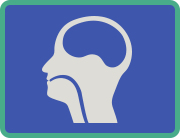Dysphagia Treatment Studies
Through our research work and years of clinical experience, we have come to realize that optimal rehabilitation for dysphagia must target physiological and neurophysiological elements that drive adaptive peripheral and central plasticity. Thus, our team has begun developing and conducting treatment studies to test rehabilitative paradigms that are based on this fundamental neuroscience knowledge.
The Intensive Dysphagia Rehabilitation (IDR) Approach Study
Dr. Malandraki is the developer of the Intensive Dysphagia Rehabilitation (IDR) approach, which is a new individualized intensive treatment program based on a systematic combination of principles of exercise physiology, neuroplasticity, and motor learning. The IDR approach incorporates 3 components: a) evidence-based oropharyngeal training increasing gradually in intensity based on exercise physiology guidelines, b) targeted swallowing practice (TSP) increasing gradually in complexity following principles of experience-dependent brain plasticity and motor learning, and c) adherence-inducing features. IDR has been successfully applied to a small cohort of adult patients with neurogenic dysphagia (Malandraki et al. 2016) and a larger research study is now under way.
The aims of our current IDR study focus on examining the safety and preliminary effectiveness of different components of the IDR approach for patients with Parkinson’s disease and patients post-stroke with dysphagia.
This study is on hold at this time and will be re-starting soon. To learn more, please contact us at swallowinglab@purdue.edu.

The components of the IDR approach developed by Dr. Malandraki
The Recline Exercise Study
During swallowing, one of the most important actions is the protection of the airway from the food being swallowed. This protection is achieved when several muscles (located under the chin) contract and the upper esophagus opens. A commonly prescribed exercise to improve muscle contraction and esophageal opening in patients with swallowing disorders is known as the head raise (or the Shaker) exercise. The head raise exercise has been shown to be effective in improving airway protection and clearance of the food through the throat, but is completed while lying down, and can cause (in some patients) neck soreness and discomfort.
Our team developed a new exercise, known as the Recline Exercise (RE). The RE retains many exercise principles of the head raise exercise (e.g., frequency and intensity), but is completed in a reclined position. Results of a randomized clinical trial (by our group) in healthy young adults showed that both the head raise and the Recline Exercise had similar neuromuscular effects and thus further investigation is warranted (Mishra et al. 2015).

The isometric part of the Recline exercise from Mishra et al. 2015, Dysphagia
To examine if this exercise can be beneficial for older adults we recently completed a randomized clinical trial in older healthy adults with very promising results. Results showed similar gains and detraining effects in biomechanical swallowing outcomes (Fujiki et al., 2019). Results also suggested the Recline Exercise is easier to perform for healthy older adults and thus may be a valuable treatment option for individuals who have difficulty performing the Head Lift Exercise. The instructional video for this new exercise is available below.
Also, stay tuned, as a new clinical trial with patients with dysphagia is planned for 2019-2020.
To learn more, please contact us at swallowinglab@purdue.edu.
The instructional video of the Recline exercise from Fujiki et al., 2019, JSLHR
The Study of Taste Perception and Swallowing
Swallowing disorders are prevalent in adults over 50 years of age, and for individuals with neurodegenerative disease, the rate climbs to at least 50%. Our lab has partnered with the Purdue Saliva, Perception, Ingestion, and Tongues (SPIT) Lab to identify factors in flavor perception that may contribute to swallowing improvements in older adults with early stages of neurodegenerative diseases, such as Parkinson's disease and Alzheimer's disease. This small-scale study funded by the Indiana CTSI and WGHI (PI: Dr. Running) will test whether commercially available or lab-created flavors can be used to improve swallowing.
To learn more, please see our study flyer below or contact us at swallowinglab@purdue.edu.
Students/trainees involved in these studies
- Shie Kantor
- Cagla Kantarcigil
- Akila Rajappa
- Abby Oliver
- Robert Fujiki
Funding provided by:
- Department of Speech, Language, and Hearing Sciences, Purdue University
- Indiana CTSI and WGHI










